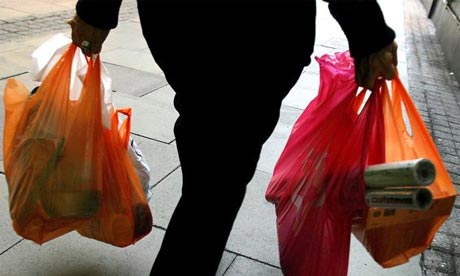Have you ever wondered why some plastic bags are stronger than others? Why bags from clothing stores at the mall tend to be strong and thick, whereas those from your local grocery store are flimsy and thin? And then there are those wispy, clear bags you get back with your dry cleaning. There are many types of plastic bags, all designed for different purposes.
The plastics we use today have come a long way since Alexander Parkes first introduced them to the world at London's Great International Exhibition in 1862. Parkes's material was an organic derivative of cellulose that could be molded when heated and then maintained its shape upon cooling.
But it wasn't until 1909 that the word "plastic" was coined. Leo H. Baekeland used the term to describe a new class of materials that included "bakelite," a substance he created from coal tar. Bakelite was used to produce many items, including telephones, cameras, and even ashtrays. Although a key component in these items, plastics did not become really popular until after World War I, when petroleum, a more easily processed substance than coal, became readily available. Petroleum and natural gas are the primary sources of the key ingredients in plastic.
Plastics are composed of polymers--large molecules consisting of repeating units called monomers. In the case of plastic bags, the repeating units are ethylene, or ethene. When ethylene molecules are polymerized to form polyethylene, they form long chains of carbon atoms in which each carbon also is bonded to two hydrogen atoms.
Many kinds of polyethylene can be made from ethylene. Plastic bags typically are made from one of three basic types: high-density polyethylene (HDPE), low-density polyethylene (LDPE), or linear low-density polyethylene (LLDPE). Those thick, glossy shopping bags from the mall are LLDPE, while grocery bags are HDPE, and garment bags from the dry cleaner are LDPE. The major difference between these three materials is the degree of branching of the polymer chain. HDPE and LLDPE are composed of linear, unbranched chains, while LDPE chains are branched.
Branching can influence a number of physical properties including tensile strength and crystallinity. The more branched a molecule is, the lower is its tensile strength and crystallinity. That's why garment bags from the dry cleaner are so weak and flimsy. They are made from highly branched LDPE.
Another difference among these types of plastics is the method in which they are made. HDPE and LLDPE are made by Ziegler-Natta vinyl polymerization, a method that uses a transition-metal catalyst, like TiCl3, to initiate polymerization. Karl Ziegler and Giulio Natta received the 1963 Nobel Prize in Chemistry for developing this method.
For a long time, Ziegler-Natta polymerization was the only way to produce linear unbranched polyethylene. Recently, a new way of producing polyethylene has become available: metallocene-catalyzed polymerization. Like the Ziegler-Natta method, the metallocene method uses metal complexes as catalysts and is often used to make novel copolymers.
LDPE, the branched polyethylene, is made by a different process called free-radical polymerization. The oldest of the three methods, it uses an initiator molecule like benzoyl peroxide instead of a metal complex. The polymerization starts when the benzoyl peroxide molecules break apart into free radicals. The unpaired electrons of the free radicals attack ethylene's carbon-carbon double bond, forming new free radicals. These then react with other ethylene molecules and so on, forming a chain of single-bonded carbon atoms that grows until the reaction terminates, often when two free radicals join together.
What else do plastic bags contain? According to William F. Carroll Jr., a polymer chemist at Occidental Chemical Corp. and president-elect of the American Chemical Society, "With the possible exception of a little lubricant to help in extrusion, plastic bags are pretty much just the native polymer." However, different pigments may be added to produce colored bags.
Plastic bags have made our lives easier in many ways. Unfortunately, they are often not disposed of properly. We see them blowing around in the streets and they often end up in streams and the oceans. These bags can be dangerous to animals, such as turtles, that ingest them or are strangled by them, especially in marine environments where plastic bags resemble jellyfish and other food items.
One solution to this problem is to make degradable bags, such as those from starch. Starch, obtained from corn or potatoes, can be converted into lactic acid, which can be polymerized to the biodegradable plastic known as polylactide. Another solution is to add an ultraviolet-light absorber to make the material degrade when exposed to sunlight. Unfortunately, these solutions can make the plastics more expensive, so they haven't caught on with consumers.
Plastics have been around for more than 100 years, and they will be around for many more. Without a doubt, they are extremely useful. But when it comes to shopping, some environmentally conscious consumers prefer to avoid plastic bags, opting instead for paper bags. And some go even further, just reusing the same cloth bag over and over again.


